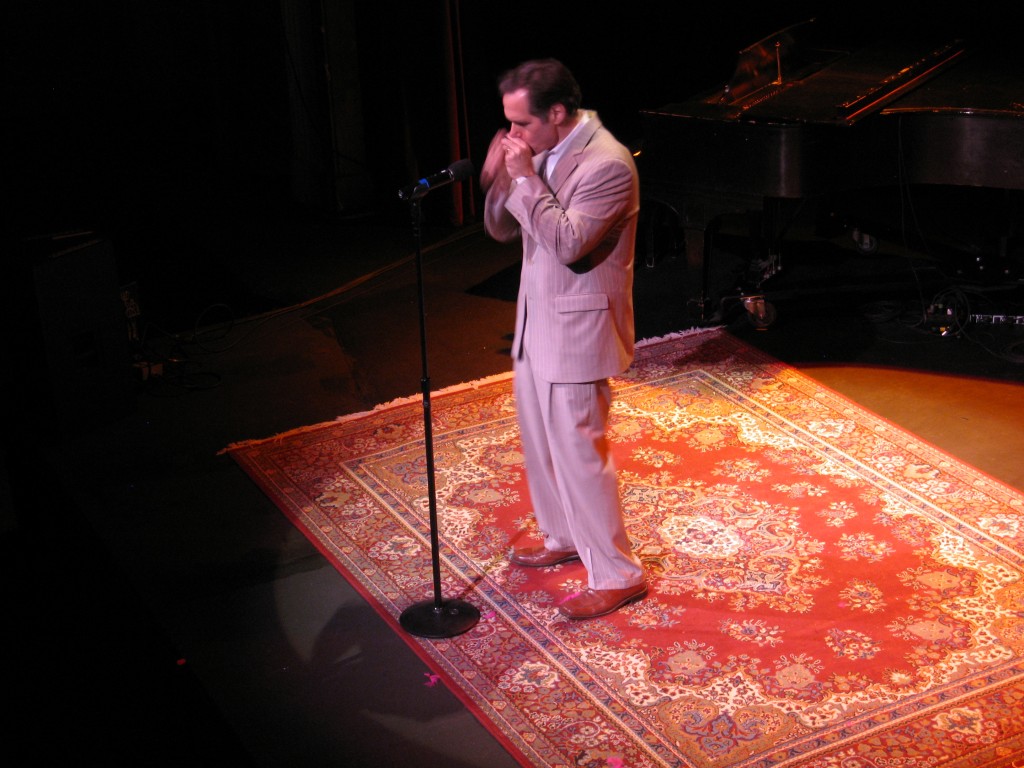Tweaking the Seydel Blues Soloist Pro
I spent, like, half an hour setting the gaps on my Seydel Blues Soloist Pro today. The harp plays a lot better. But I couldn’t get it set up to both honk loudly in the middle register and overblow easily in the same place. And…
Gear, gear, gear
One of the pleasures of SPAH is checking out the gear. I bought 3 new harps at SPAH: a Seydel 1847 ($80), a Suzuki Harpmaster ($16), and a Seydel Blues Soloist Pro ($35). A few impressions of each follow. The 1847 is expensive, but it…
A shimmering moment from SPAH
Last night Buddy Wakefield, the president of the Newport News Harmonica Plus club, told me that he and some of his friends were going to teach 180 school kids how to play the harp this morning, after which they were all going to walk around…
Jamming with Brendan Power
I stopped by the Harp Depot store this morning and spent a little time at the Suzuki table. I ended up checking out some of their new harp prototypes, which I really liked. (They asked me not to discuss them in detail, and I won’t.) …
Thursday night at SPAH 2007
Thursday night was fun, but it could have been more fun, I think. Or maybe not. The folks who run SPAH are obviously well aware that they’re catering to at least two different audiences–the blues/rock (diatonic oriented) crowd, which tends to be younger and like…
Chromatics/Diatonics, Electronic Effects, Charlie Musselwhite
I started the day at SPAH by participating in a panel featuring players who play both chromatic and diatonic harps. It was a good session, with lots of people in attendance. One thing that became very clear is that one reason the panelists could play…
SPAH is heating up
SPAH began to get interesting yesterday, for me anyway. A critical mass of great players is now onsite, and it’s not hard to find really hot music. James Conway’s set of Irish music last night was really hot music. Conway performed with his regular Chicago-based…
More harmonica choices than you can shake a stick at
One of the things that’s really obvious at this SPAH is that the number of manufacturers making good-quality harmonicas has increased drastically. In my youth, the only manufacturer of (barely) usable harmonicas was Hohner, and their idea of product development back then was putting a…
Breakfast at SPAH
Went to breakfast and saw Michael Rubin, a harp player whose various posts to Harp-L (the Internet harmonica mailing list that most of the pros use) are always informative and interesting. Otherwise, I noticed again how old the general attendees to SPAH are. I’m not…
I’ve arrived at SPAH
Got in to the hotel at about 11:30 PM last night. As I came into the lobby, I saw small clusters of mostly middle-aged men playing harmonicas. SPAH is mostly men, and most of the membership seems to be in its mid-40s and up. The…
WHAT’S NEW
Categories
- Audio/Video
- Blog
- Blue Future
- Digitech RP Tricks and Tips
- Discography, CDs, Projects, Info, Notes
- Featured Video
- For the Beginner
- Gallery
- Hunter's Effects
- Hunter's Music
- Huntersounds for Fender Mustang
- Meet the Pros
- More Video
- MPH: Maw/Preston/Hunter
- My Three Big Contributions
- Player's Resources
- Pro Tips & Techniques
- Recommended Artists & Recordings
- Recommended Gear
- Recorded Performances
- Reviews, Interviews, Testimonials
- The Lucky One
- Uncategorized
- Upcoming Performances
- Zoom G3 Tips and Tricks
